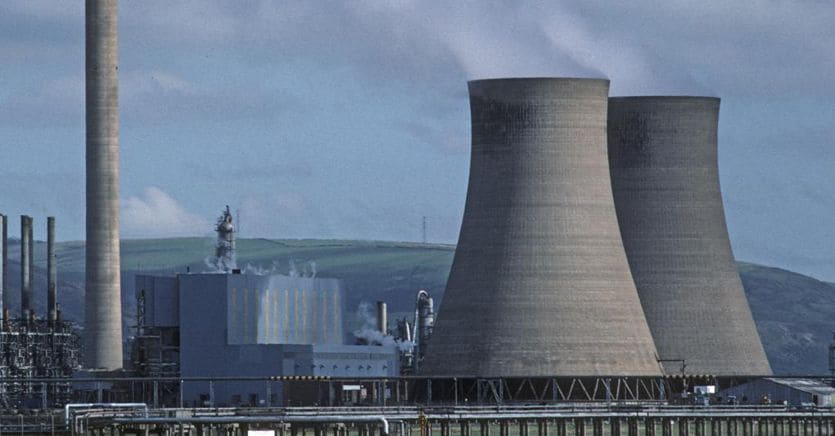Inside a modest red brick shed, in the industrial area of Whestoneon the outskirts of Leicester, a large rectangular structure stands out: inside there is a nuclear reactor. The cage, with a silo inside, is 16 meters high: from below it is gigantic, but in reality it is the smallest nuclear power plant in the world. No atomic risk, however: the one on display is a life-size replica, a 1 to 1 scale model to be exhibited to customers and visitors. Outside the complex there is the writing Cavendish Nuclear. He is part of the group Babcockthe UK’s largest nuclear industry.
Dear Bill & Energy Transition
The energy crisis has caused the cost of energy, the main voice of inflation, the new specter across Europe that is bringing businesses and household savings to their knees. The crisis falls in the middle of energy transitiontowards the finish line of Zero Emissions for all advanced countries. England, unlike Italy, has an advantage: it has never said No to nuclear power, whose first fission experiment was conducted inManchester University. And now, on the double environmental and economic push, Babcock e hours co they are planning the next generation nuclear power plant: it is called U-Battery because it is a large pile inside a rectangular cage that it can produce 10 megawatts of electricity. The revolutionary aspect is the size, it can be installed anywhere; and a Lego structure: more modules can be assembled to reach the necessary power. There central Lilliputian it does not use water to cool the reactor, like the now infamous Fukushima; use theenriched uraniumbut the coolant is thehelium (with nitrogen), while the moderator is there graphite. It is a much safer system, the builders explain, because it is passive and based only on principles of physics. aircraft carrier Queen Elizabeth. “Nuclear plays an important role in decarbonizzazione“Begins Steve Threlfall, general manager of U-Battery. Renewable energies alone will never be able to cover all energy needs, in the UK as in Europe: the atom is indispensable.
The smallest nuclear power plant in the world
Halfway between traditional power plants (like the imposing Hinkley Point) and portable nuclear power, which the Italian Stefano Buono with NewCleo is developing in the UK, the Lego reactor makes space the trump card: a traditional power plant occupies one surface of 170 hectares and requires 9-12 years for construction. U-Battery, on the other hand, is buried for 10 meters out of 16, takes up little space and takes only 2 years to build. For years, the only company Leicester was famous for was Thomas Cook, the first travel agency in the world and also the largest: still today a statue outside the station remembers Mr. Cook. But it went bankrupt three years ago. And apart from the club fairytale LCFCwhich won the Premier League with Claudio Ranierithe English city, once a thriving Roman colony of the Britannia province (it has the largest spas in the UK), there is little else to remember. Now, however, it could become the city of the nuclear revolution, which however has little revolutionary: the HTGR technology (gas reactor with high temperature) has existed since the 1960s. It was also used by theEni from Enrico Mattei for the Latina plant, but it was then abandoned. Today it is reborn, with the advantage of size.
A useful solution for Italy (but you can’t)
The mini power plant produces electricity and heat: it is perfect for all those basic industries that use a furnace (cement, glass, chemical and ceramic). The reactor is installed inside the existing industrial area, without consuming new land. Or for remote communities: islands or areas not connected to the national grid. U-Battery is a public-proven mixed project: Cavendish and Urenco got 10 million from the government. The life cycle of the nano reactor is 30 years: it is built to be dismantled, another ecological aspect. The cost is prohibitive: each module costs £ 50 million. But direct sales are not being planned: they will make ten-year contracts for the supply of electricity and heat. In England there are basic industries worth 52 billion that employ 500 thousand people. They are all potential customers. U-Battery would also be very useful to Italy, if only the country gave up the veto on the atom: from the hundreds of energy-intensive manufacturing industries of the north; and to the many southern islands, still powered by diesel generators.
